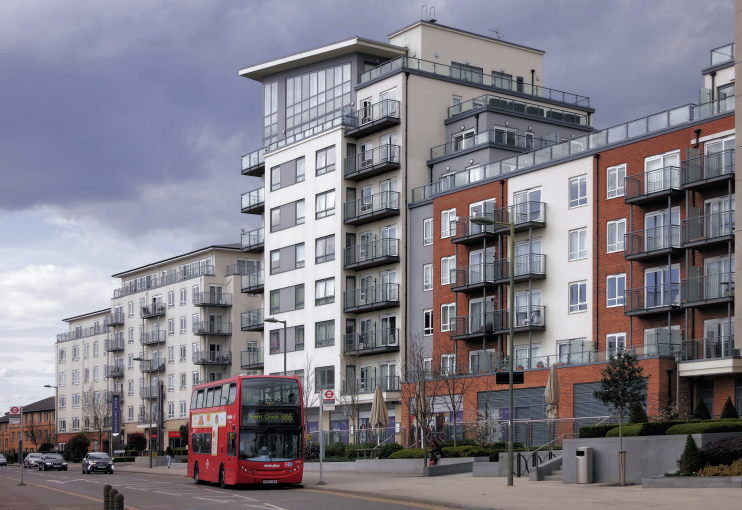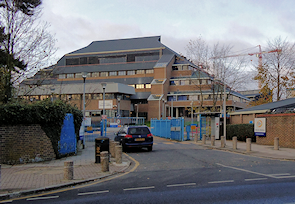Colindale
Colindale, Barnet
An ‘opportunity area’ (now being taken advantage of) in the hinterland of the A5 south of Edgware

Colindale’s name probably derives from 16th-century residents the Colinn family. The settlement took root at the end of the 19th century, near the older but now-lost hamlet of Colindeep, which lay in the valley of the Silk Stream, a tributary of the River Brent.
Once considered part of Hendon, but now separated from that district by the M1, the eastern side of Colindale has had a long association with aeronautics. In the years leading up to 1914, aircraft manufacturing and pilot training dominated the locality – and these activities multiplied after the outbreak of the First World War, with associated industries attracted by government intervention. After its establishment in 1918, the Royal Air Force flew from Hendon aerodrome, which the government acquired in 1925.
During the Second World War the aerodrome became a transport, communications and training base, but its unsuitability for post-war jet aircraft meant that the last flying units left in 1957, although RAF Hendon didn’t officially close until 1988. The RAF Museum opened on the base in 1972, in two of the aerodrome’s original hangers, which have been supplemented since by other exhibition halls.
The GLC’s Grahame Park estate filled most of the RAF site from the late 1960s. On Aerodrome Road, to the estate’s south, the Peel Centre is the Metropolitan Police’s main training establishment. On Colindale Avenue, Public Health England operates specialist and reference microbiology services and infectious disease surveillance, including outbreak investigation.

As a designated zone for ‘housing intensification’, Colindale is presently experiencing more redevelopment than almost any other part of London.
Thousands of new homes have filled Beaufort Park (a 25-acre corner of the former aerodrome, shown in the photograph at the top of the page) and many more have been built or are planned for construction in place of run-down council housing and on sites previously occupied by Colindale hospital (redeveloped as ‘Pulse’), the Oriental City shopping centre, the British Library Newspaper Library and on 54 acres of surplus land at the Peel Centre.
Meanwhile, the police training centre itself will be fully rebuilt “to deliver facilities fit for the needs of modern policing” and to reflect the fact that residential training no longer takes place here.
Colindale has historically been a relatively deprived locality – by the standards of a prosperous borough – but this is changing as the rash of private housing projects brings in better-off newcomers, whom Barnet council seem to prefer because they pay more council tax and rely less on public services.
Prompted by his familiarity with Hendon aerodrome and Colindale tube station, TE Lawrence (‘Lawrence of Arabia’) adopted the pseudonym ‘Colin Dale’ when writing reviews for The Spectator.
Postal district: NW9
Population: 17,098 (2011 census)
Station: Northern line (zone 4)
Blog: Colindale Renewal
